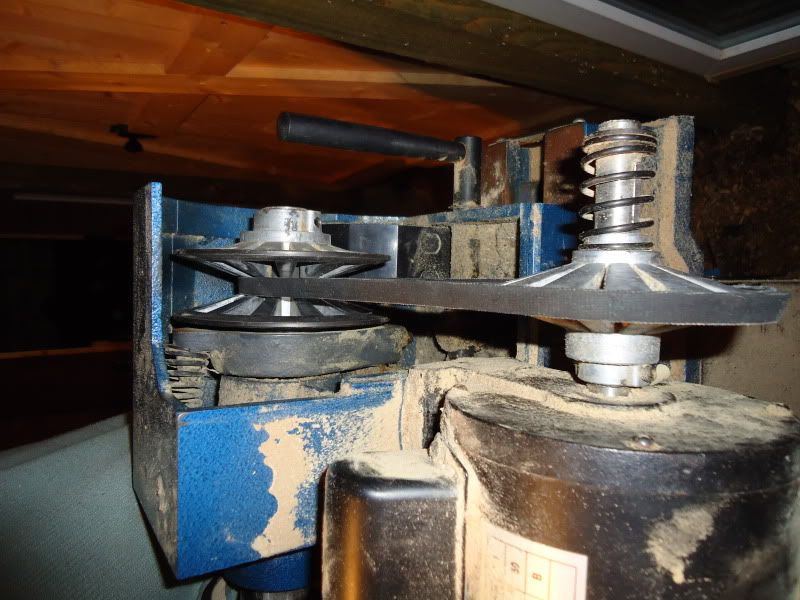CHJ
Established Member
You just need to part the two motor pulley flanges, the belt is riding on the top not in the vee.
Be very careful if you try to edge them apart, the castings are very fragile. You need as many wooden wedges as you can place between them to gently ease them apart.
You may need assistance to do this but your safest bet is to slacken off the inner pulley, undo the grub screw, then remove the circlip on the end of the shaft. Be ready to catch the spring. Then refix the inner pulley and with belt at its highest point on the pulley but just in the vee refit the spring and circlip. to aid this compress the spring in a vice and wire it semi closed with a couple of pieces of thin wire. When circlip is in place snip the wire ties and release the spring.
In future leave the damaged belt in place on the motor pulley until the new one is fitted then cut the old one free.
Be very careful if you try to edge them apart, the castings are very fragile. You need as many wooden wedges as you can place between them to gently ease them apart.
You may need assistance to do this but your safest bet is to slacken off the inner pulley, undo the grub screw, then remove the circlip on the end of the shaft. Be ready to catch the spring. Then refix the inner pulley and with belt at its highest point on the pulley but just in the vee refit the spring and circlip. to aid this compress the spring in a vice and wire it semi closed with a couple of pieces of thin wire. When circlip is in place snip the wire ties and release the spring.
In future leave the damaged belt in place on the motor pulley until the new one is fitted then cut the old one free.






